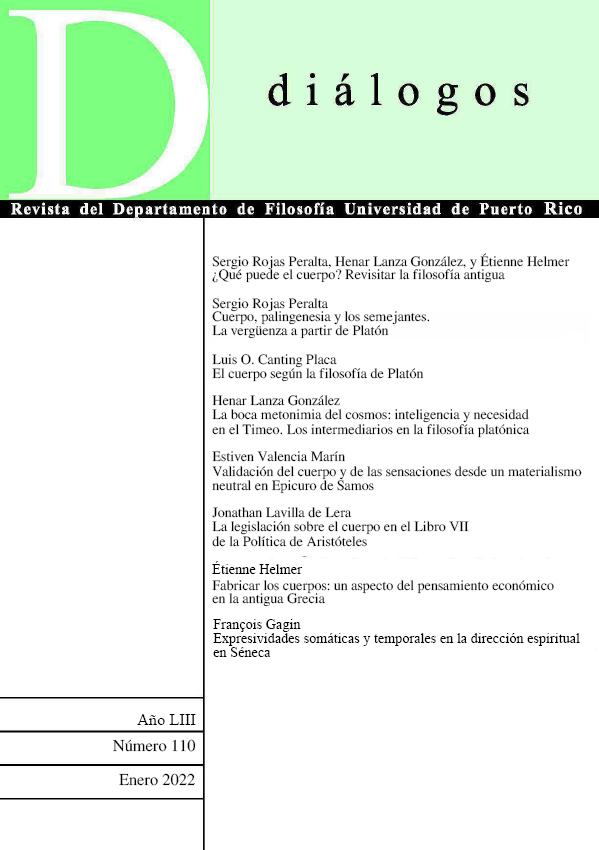Abstract
The body seems to play a secondary role in Platonism. But it does not simply disappear. Er‘s myth allows us to introduce a reflection on what the body is. The body can be defined platonically in various ways: as a tomb, as a prison, as the remains after the separation of the soul. Among Plato‘s various works of mythography, he introduces a kind of triangulation between the πόλιÏ,, the ποίησιÏ, and Ï"á½° τῆÏ,ψυχῆÏ, εἴδα, against which damage to the soul appears, which sooner or later is reflected in the body. And then, the body fulfills a soteriological – ideological – function insofar as it has to do with self-care. Plato speaks of being seen by one‘s fellows (Rep.X, 604a). This again refers to mythography and the notion that a certain reputation (shame) should be internalized according to others ("empathy"). And the others, the fellows, become the model for the body. Between one life and another, the body is
the necessary intermediary to understand not only the passage from one life to the next, but also the meaning of ἐπιμέλεια and justice.

This work is licensed under a Creative Commons Attribution-NonCommercial 4.0 International License.
Copyright (c) 2022 Diálogos

